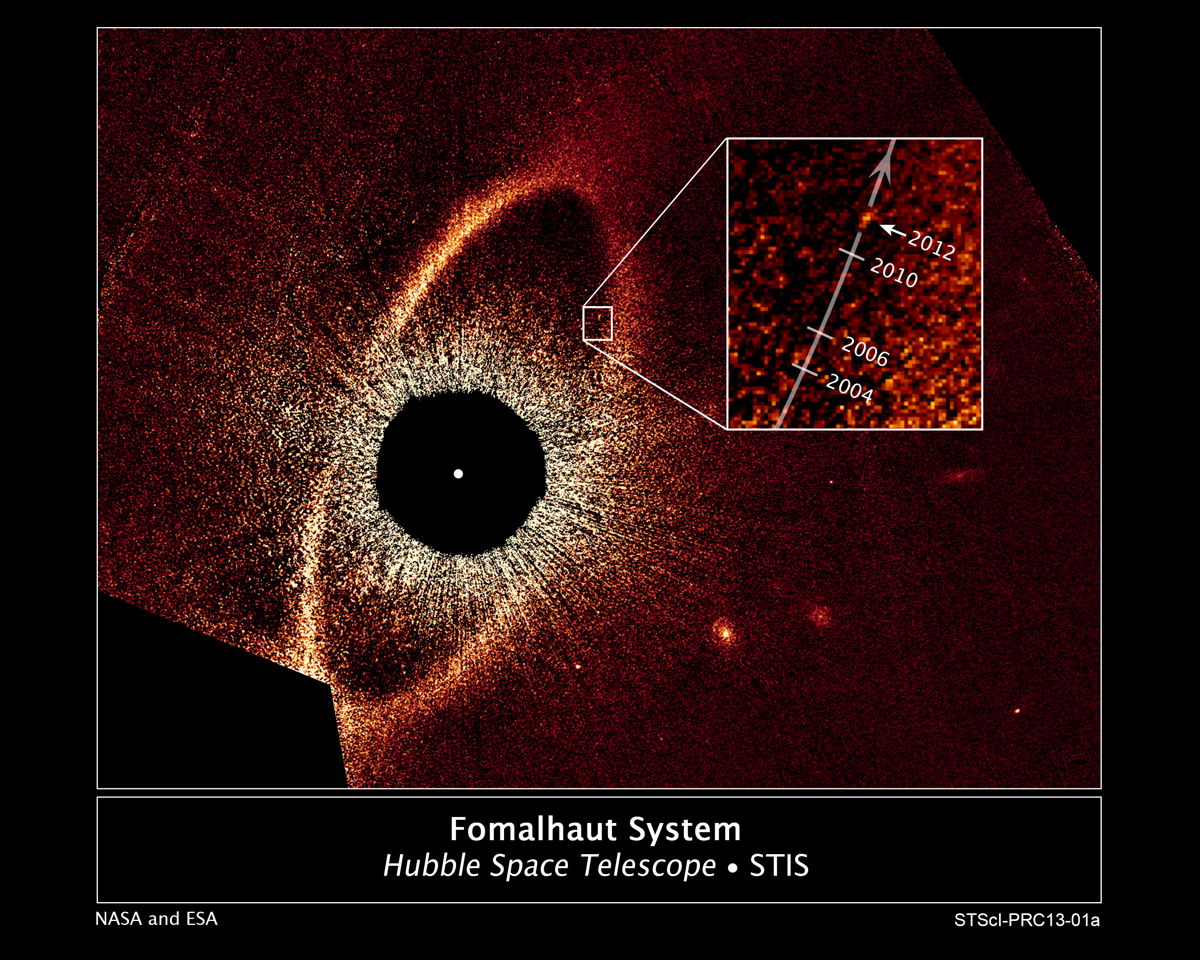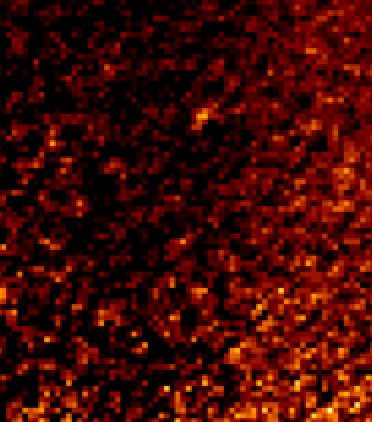'Zombie' Planet's Rogue Orbit Around Star Shocks Scientists

The unbalanced orbit of a so-called "zombie planet" in a dusty star system has astronomers struggling to explain the exoplanet's behavior.
New observations of the planet Fomalhaut b by the Hubble Space Telescope revealed the oddball orbit, which has wild extremes between its closest and farthest points from the parent star and appears to cross through a vast minefield of dusty debris.
"We are shocked. This is not what we expected," said study leader Paul Kalas, an astronomer with the University of California at Berkeley and the SETI Institute in Mountain View, Calif., in a statement Tuesday (Jan. 8).
'Zombie planet' gets weirder
Fomalhaut b is a giant alien planet that is nearly three times the mass of Jupiter. It was the first alien planet ever directly imaged in visible light. The planet orbits the dust-shrouded star Fomalhaut and is located about 25 light-years away in the constellation Piscis Austrinus.
In October, scientists dubbed the world a "zombie planet" because it appeared to rise from the academic grave. After first being discovered in 2008, subsequent studies suggested the planet was nothing more than a huge dust cloud. In 2012, astronomers resurrected Fomalhaut b's planet status when new observations proved there was a planetary object embedded in a free-floating dust cloud. [Gallery: The Strangest Alien Planets]
The latest observations of the odd planetary system revealed that the dusty debris disk surrounding the star Fomalhaut is much wider than previously thought. The debris belt spans a vast region of space between 14 billion and 20 billion miles (22.5 billion to 32.1 billion kilometers) around the star.
Breaking space news, the latest updates on rocket launches, skywatching events and more!
Stranger still: The planet Fomalhaut b appears to approach with 4.6 billion miles (7.4 billion km) of its star at the closest point in its orbit, then swing way out to a point about 27 billion miles (43.4 billion km) away at the farthest point. Scientists call the extremes of such a planet’s path a highly eccentric orbit.
Fomalhaut b's path, scientists say, sends the planet crashing through the surrounding debris disk during its 2,000-year orbit around its parent star. The research was unveiled Tuesday at the 221st meeting of the American Astronomical Society in Long Beach, Calif.
A hidden planet around Fomalhaut?
Among the several theories to explain Fomalhaut b's extreme orbit is the possibility that the exoplanet had an encounter with another planet, a yet-to-be discovered neighbor. The cosmic close encounter could have gravitationally ejected Fomalhaut b into its current orbit, scientists said.
"Hot Jupiters get tossed through scattering events, where one planet goes in and one gets thrown out," study co-investigator Mark Clampin, of NASA's Goddard Space Flight Center in Greenbelt, Md., said in a statement. "This could be the planet that gets thrown out."
Hubble telescope images revealed an apparent gap in the dust and ice debris around Fomalhaut, a region that could have been swept clean by the presence of the undetected planet, researchers said.
Another theory suggests that Fomalhaut b could have once had a small dwarf planet as a neighbor, but that the giant planet obliterated the smaller world in a catastrophic collision. Such a crash could explain why the star Fomalhaut has a narrow outer debris disk that is less than 10,000 years old, scientists said.
Another tantalizing theory suggests Fomalhaut b may have Saturn-like rings and be destined for a spectacular crash through the debris disk around the star Fomalhaut in the year 2032. [Photos of Saturn’s Glorious Rings]
A set of rings or a nearby shroud of dust and ice could explain why Fomalhaut b appears so bright in visible light images, but is relatively dim in infrared light, according to Kalas. The rings or dust around the planet would reflect starlight, making the planet bright. A dust cloud could be created impacts on moons around Fomalhaut b, if they exist, researchers said.
In 2032, astronomers expect to solve one riddle that has perplexed scientists since Fomalhaut b's discovery: Is the exoplanet in the plane of the debris disk around its star, or not?
If the planet is on the same plane as the debris disk, than it will be bombarded by dust and ice in 2032 when it crosses through the disk during the outbound leg of its orbit, researchers said. That would make the planet increase its brightness in infrared light, they added. Impacts from the debris could create a celestial light show on the planet similar to that seen on Jupiter when the comet Shoemaker-Levy 9 battered the gas giant in 1994.
If Fomalhaut b is not in the same plane as the debris disk, then it should gradually get dimmer as it gets farther and farther from its parent star, researchers said. One way or another, the clues should come out starting in 2032, scientists said.
Hubble telescope officials said astronomers plan to continue to monitor the Fomalhaut star system over the next few years and decades to see how the star system changes over time.
You can follow SPACE.com Managing Editor Tariq Malik on Twitter @tariqjmalik. Follow SPACE.com for the latest in space science and exploration news on Twitter @Spacedotcom and on Facebook.
Join our Space Forums to keep talking space on the latest missions, night sky and more! And if you have a news tip, correction or comment, let us know at: community@space.com.

Tariq is the award-winning Editor-in-Chief of Space.com and joined the team in 2001. He covers human spaceflight, as well as skywatching and entertainment. He became Space.com's Editor-in-Chief in 2019. Before joining Space.com, Tariq was a staff reporter for The Los Angeles Times covering education and city beats in La Habra, Fullerton and Huntington Beach. He's a recipient of the 2022 Harry Kolcum Award for excellence in space reporting and the 2025 Space Pioneer Award from the National Space Society. He is an Eagle Scout and Space Camp alum with journalism degrees from the USC and NYU. You can find Tariq at Space.com and as the co-host to the This Week In Space podcast on the TWiT network. To see his latest project, you can follow Tariq on Twitter @tariqjmalik.



